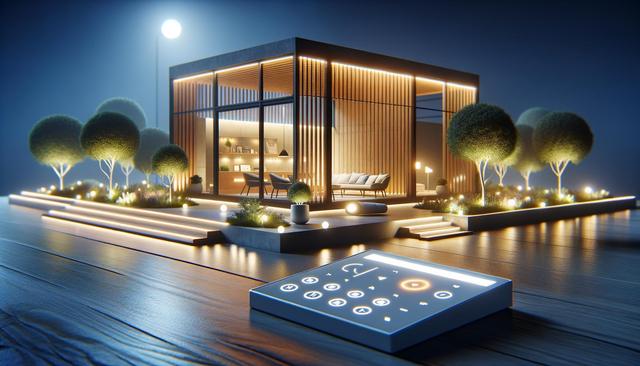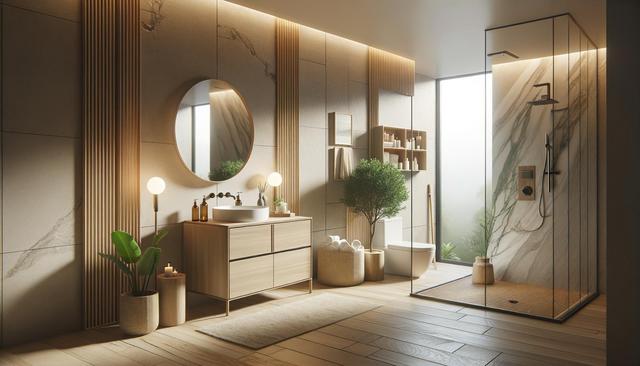What is Smart Home Lighting Control?
Smart home lighting control refers to technology that enables homeowners to manage lighting throughout their home using digital interfaces such as mobile apps, voice commands, or automation systems. These systems are part of the broader smart home ecosystem and are designed to enhance convenience, energy efficiency, and customization. Unlike traditional lighting setups, smart lighting allows for remote control, scheduling, and integration with other smart devices for a more cohesive and responsive home experience.
At its core, smart lighting relies on connected devices, including smart bulbs, switches, dimmers, and hubs that communicate with each other via Wi-Fi, Bluetooth, or specialized protocols like Zigbee or Z-Wave. These systems can be tailored to individual preferences, allowing users to adjust brightness, color temperature, or even hue to create the desired ambiance in any room.
Key Features and Capabilities
Smart lighting systems come with a wide range of features that can significantly improve daily life. Whether you’re looking to automate routine tasks or enhance your home’s security, the capabilities of these systems are designed to meet various needs.
Some of the most notable features include:
- Remote Access: Control your lights from anywhere using a smartphone or tablet.
- Scheduling: Set timers or create routines that turn lights on or off at specific times.
- Voice Control: Integrate with voice assistants to control lighting through simple commands.
- Scene Setting: Customize scenes for different activities like reading, relaxing, or entertaining guests.
- Energy Monitoring: Track energy usage and make adjustments to reduce consumption.
These features not only add convenience but also allow for a more personalized and efficient living space. With the right setup, users can create an environment that adapts to their lifestyle and preferences.
Energy Efficiency and Cost Savings
One of the most practical advantages of smart home lighting control is its potential for energy savings. Traditional lighting systems often lead to unnecessary energy consumption due to lights being left on or inefficient bulbs. Smart systems can mitigate these issues through automation and intelligent design.
Some of the ways smart lighting contributes to energy efficiency include:
- Motion Sensors: Lights turn on only when someone is present in the room.
- Daylight Harvesting: Systems adjust brightness based on the amount of natural light available.
- Usage Monitoring: Users can review consumption data and make informed adjustments.
By optimizing how and when lights are used, homeowners can see a noticeable reduction in their monthly utility bills. Over time, these savings can offset the initial costs of upgrading to a smart lighting system, making it a worthwhile investment for many households.
Improved Comfort and Lifestyle Integration
Smart lighting control enhances comfort by allowing users to tailor lighting to match their daily routines and personal preferences. Whether it’s gradually brightening the lights in the morning to simulate a sunrise or dimming them in the evening for relaxation, these systems can improve overall well-being.
Integration with other smart devices also enables advanced automation scenarios. For example:
- Home Theater Mode: Dim the lights and close the blinds with a single command.
- Welcome Home Scenes: Lights turn on automatically when you’re near home.
- Goodnight Routines: All lights turn off and security systems activate at bedtime.
Such seamless integration allows lighting to become an intuitive part of the home environment, responding to the user’s needs without manual intervention. This level of convenience adds a new dimension to home living, making daily tasks more enjoyable and less time-consuming.
Installation and Compatibility Considerations
Before adopting smart lighting, it’s important to consider the installation process and compatibility with existing systems. While some smart bulbs are simple plug-and-play solutions, others may require replacing wall switches or adding a central hub. Homeowners should evaluate their current wiring, Wi-Fi strength, and desired features before purchasing a system.
Compatibility is another crucial factor. Not all smart lighting products work seamlessly with every smart home platform. Ensuring that bulbs, switches, and controllers are compatible with your preferred ecosystem can prevent frustration and simplify setup. Many manufacturers provide compatibility charts or apps to help users select the right components.
Professional installation may be necessary for more complex setups, especially those involving hardwired switches or integration with home automation systems. However, many DIY options are available for those comfortable with basic electrical work. Planning ahead and researching product reviews and user experiences can go a long way in ensuring a smooth transition to smart lighting.
Conclusion: Making the Switch to Smart Lighting
Smart home lighting control offers a meaningful upgrade for homeowners seeking more convenience, customization, and energy efficiency. While the initial setup may require some planning and investment, the long-term benefits in comfort, cost savings, and home management can be substantial. By understanding the features, installation requirements, and compatibility options, users can select a system that fits their lifestyle and enhances their living space. As technology continues to evolve, smart lighting is becoming an increasingly accessible and valuable addition to modern homes.


